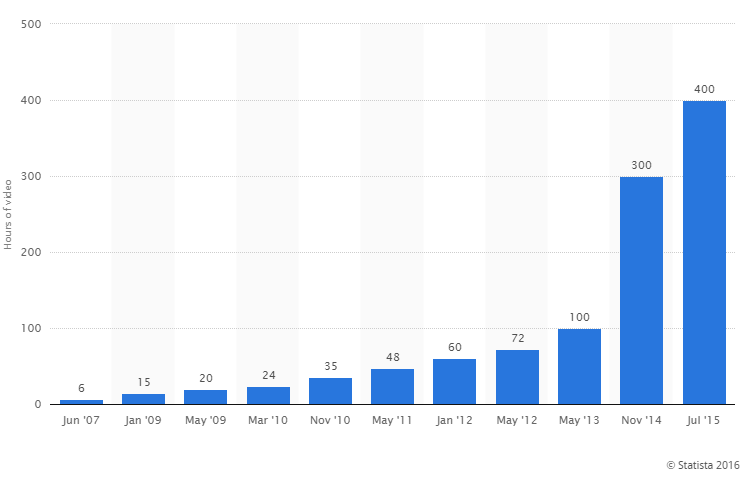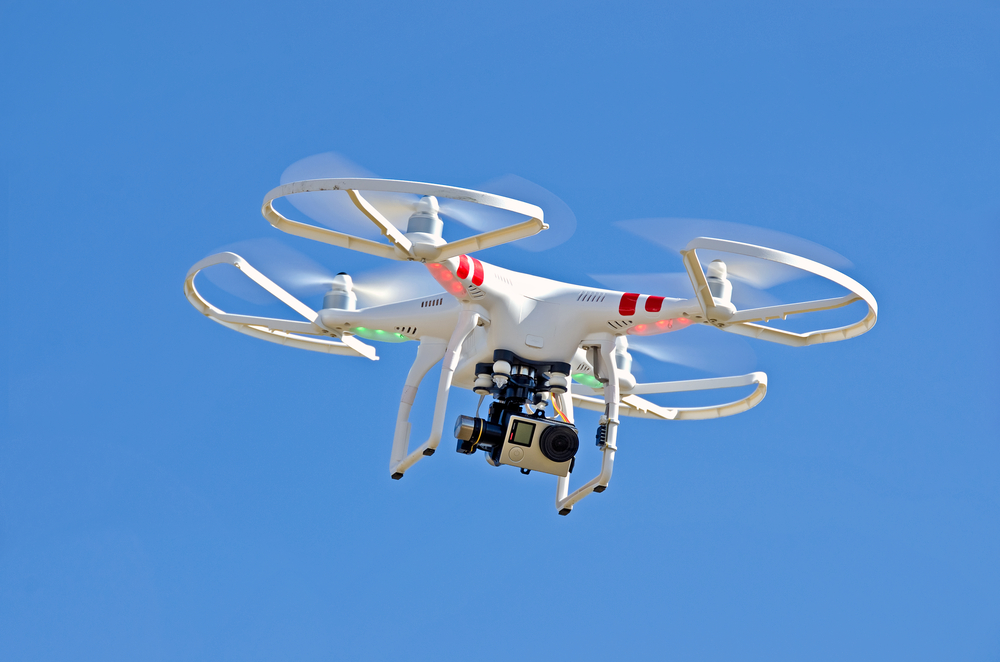
Analyzing Video, the Biggest Data of Them All

(Andrey_Popov/Shutterstock)
Video data is the fastest growing data type on the Internet, and arguably one of the fastest growing period. Thanks to a proliferation of high-definition video cameras, the volume of video data is exploding. While Web-based delivery of video for entertainment purposes is projected to become a $100 billion industry unto its own, another big opportunity revolves around video analytics.
We’re in the midst of a hockey-stick like curve with respect to the growth of video data. Consider that, in July 2015, YouTube users uploaded 400 hours of new video content every minute, which is up nearly 10x in just five years, according to Statista. And that, at any given time, videos streaming from Netflix accounts for about 37 percent of all traffic on the Internet, according to Sandvine.
From smart phones with 4K-resolution cameras to surveillance cameras in the streets, from Phantom drones mounted with GoPros to Google’s fleet of earth-facing satellites, we’re entering a new era marked by the proliferation of video and video data.
Obviously, the phenomenon extends beyond cat videos. Now it’s getting the attention of tech big wigs, who are keen to cash in on the growth. “We’re at the beginning of a golden age of online video,” Facebook CEO Mark Zuckerberg said recently “Video isn’t just a single kind of content. We think it’s a medium that allows people to interact in a lot of new ways.

Number of hours of video uploaded to YouTube every minute, according to Statista
Video has become ubiquitous in the social media trade, thanks to platforms like Vine, Periscope, and Snapchat. And you may have noticed how the likes of Netflix, Amazon, and Hulu are horning in on the broadcast and cable TV markets, thanks to changing consumer preferences and the rapid evolution of technology.
The proliferation of video data has also grabbed the attention of IBM (NYSE: IBM), which is investing billions into its newly announced IBM Cloud Video unit. Sporting the combined capabilities of Cleversafe, Aspera, Softlayer, and Ustream – as well as the analytics from Watson — IBM is aiming to provide the core underlying infrastructure for organizations that are looking to make video a central part of what they do.
Brad Hunstable, who joined IBM with its Ustream acquisition, says the industry has reached a tipping point with video.
“Video is the fastest growing data type on the Internet,” Hunstable tells Datanami. “It’s also the most emotional and arguably one of the most powerful mediums on the Internet. When you combine that with cognitive capabilities like Watson and AI, suddenly this becomes a really exciting space.”
IBM, which projects video to be a $100 billion opportunity over the next three years, is positioning itself to be a one-stop shop for corporate video needs. While it will never get into the content generation business (we can all breathe a sigh of relief there), the company is hankering to take on just about every other aspect of the video opportunity—from uploading and storing video to working with content delivery networks (CDNs) to ensure that millions of people can view not only live events, but content on demand (COD) videos at the quality level that they expect.
The company has already signed some big customers in the entertainment space, including the NFL, HBO GO and HBO Now, Lion’s Gate, and the Canadian Broadcasting Corporation (CBC). But IBM is pitching its video tent beyond just the entertainment space, and is betting that videos and video data becomes more widespread and important to companies across all industries.

Drones are increasingly being used to capture video from the air (Maria Dryfhout/Shutterstock)
“Where video starts to get really interesting…is where insurance companies use drones to fly over Texas communities to inspect hail damage,” Hunstable says. “Today they send an adjuster out to climb on roofs, and they take a 10×10 square, and literally circle the number of dots on your roof. If you have certain number of dots in a 10×10 square, you get a new roof. It’s very archaic.
“What will happen in the future,” he continues, “is they’ll send drones to the neighborhood and they’ll know from the weather data–which by the way we now own and can utilize [thanks to IBM’s acquisition of The Weather Company]–and by using algorithms, they’ll know if that house has a high propensity for hail damage, and if it does they’ll automatically send a check through the mail to get your roof done.”
There’s also the potential to use TWC weather data to make video recommendations to viewers of IBM’s entertainment clients. There are some interesting correlations between the weather and people’s video-watching preferences, Hunstable says, and this could be used to boost viewer satisfaction and reduce churn. The return on investment (ROI) on something that like is very quick.
Body-worn police cameras also represent an opportunity to embark upon some video and audio analytics. “If you have a live video feed from a police cam, using some basic analytics and algorithms and Watson, you can tell the sound of a type of gun, whether it was the officer’s gun, the distance away, and automatically deploy backup when shots are fired,” says Hunsable, who served in the U.S. Army and co-founded the micro-broadcasting company Ustream with actor John Ham and Dr. Gyula Feher as a way to connect with friends deployed to Iraq. “Working in the military, [police data] is near and dear to my heart.”
Video data will account for 80 percent of all Internet traffic by 2019, according to IBM. But outside the Internet, the rapid proliferation of closed-circuit surveillance video is also threatening to overwhelm companies. In 2013, for example, the UK government deployed 5 Million CCTV cameras. That’s about one camera for every 12 people, according Pivotal Senior Data Scientist at Victor Fang.

Researchers are exploring the use of deep neural networks to glean data from video
A typical enterprise that’s using surveillance cameras will generate about a terabyte of video every day. They’ll typically hold onto about 30 day’s worth of footage, which occupies from several terabytes to petabytes worth of space, Fang writes in a 2013 article.
Pivotal relied on MapReduce to implement computer vision algorithms to analyze the data stored in an Apache Hadoop lake. While that MapReduce component worked, Pivotal is now relying on Apache Spark, in combination with the open source computer vision library OpenCV, to power its video analytics data lake (VADL).
GPUs are being widely deployed for image recognition, and as you might expect, they’re also being asked to power the next generation of video analytics. In a case study posted to the Nvidia website, Dr. Sadiye Guler, founding president of IntuVision said “GPU acceleration enables analysts to get more information out of video in a shorter period time, greatly improving the time to analyze key information critical to resolving an incident, or collecting timely intelligence for security or marketing.”
Web giants are relying on GPUs and deep learning models to power image recognition, and in the future, municipalities will be able to leverage the same combination to track people and vehicles moving about a city. “Deep learning can leverage smart city big data to train deep models which are more robust to visual variations of target objects than traditional models,” researchers Li Wang, Gene Wang, and Dennis Sng write in a 2015 research paper. “Therefore, smart city tracking systems can be enhanced by using deep learning algorithms for handling large amount of video data.”
Video surveillance is projected by MarketsandMarkets to be a $25 billion business this year. “Video analytics are undergoing significant, rapid changes because of the increasing availability of video in municipalities, improvements to the underlying technology, and declining costs to implement,” says Alison Brooks, IDC’s research director for smart cities and public safety.
Video data hasn’t had a seat at the big data analytics table up to this point. But considering the amount of video data being generated and the evolution of analytic tools that can be used to glean insights from it, that appears to be changing.
Related Items:
Fleet Manager Leverages Video Analytics
How Big Data Imagery from Satellites May Help Your Business
Unstructured Video Data Creating IT Challenge as Volume Explodes































